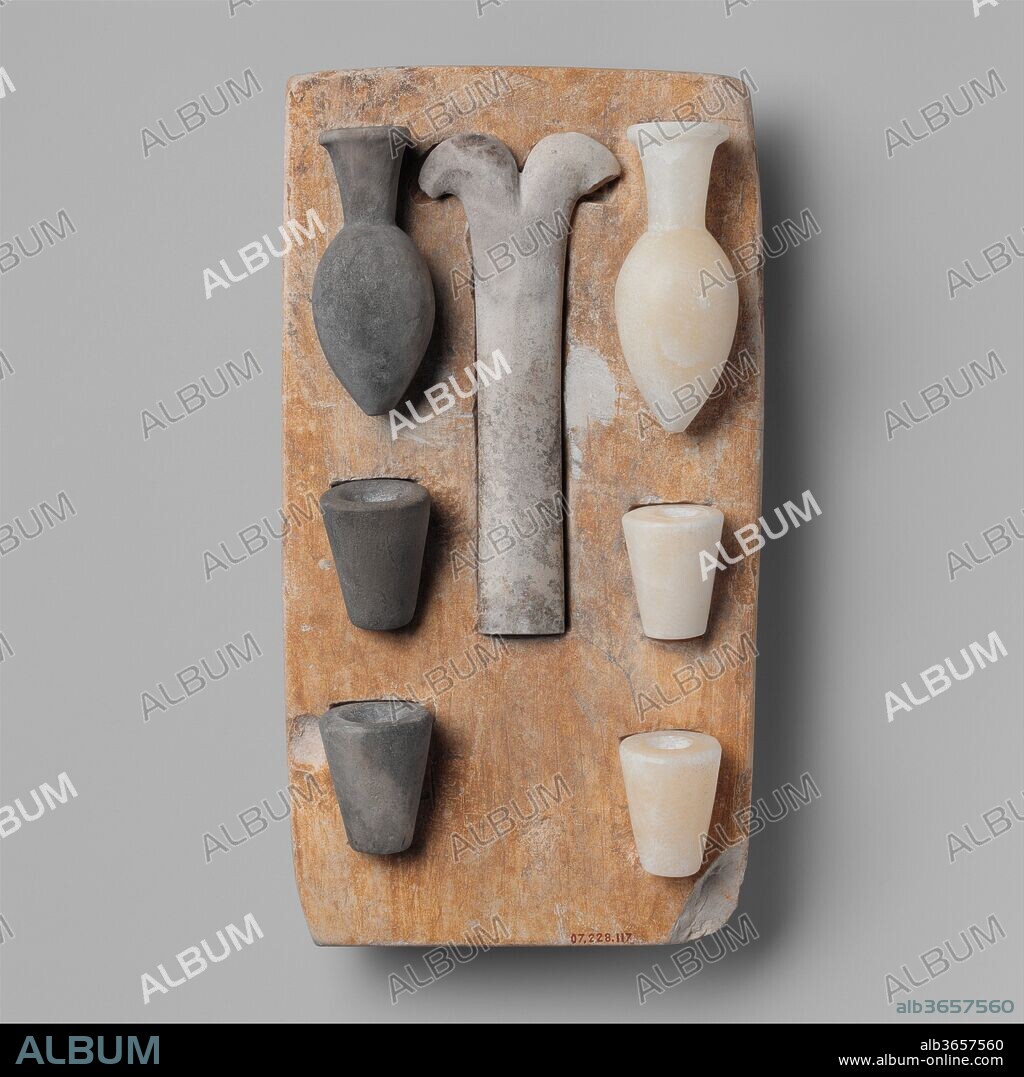alb3657560
Model of the "Opening of the Mouth" ritual equipment

|
Add to another lightbox |
|
Add to another lightbox |



Title:
Model of the "Opening of the Mouth" ritual equipment
Caption:
Model of the "Opening of the Mouth" ritual equipment. Dimensions: Tray: L. 22 × W. 12 × H. 3.2 cm (8 11/16 × 4 3/4 × 1 1/4 in.). Dynasty: Dynasty 5-6. Date: ca. 2465-2150 B.C..
The small stone tray holds models of objects required for the Opening of the Mouth ceremony. This rite reanimated the deceased or animated a statue so that it could eat, breathe, see, hear, and otherwise enjoy everything offered to it.
The forked instrument was touched to the mouth of the deceased's mummy or statue; it symbolically restored the individual's capability of independent existence. In addition to the implement, this set includes replicas of the vessels with which the newly revived spirit was offered milk (a baby's first source of nourishment), salt water (used for cleansing), and fresh water..
Forked blades (see 16.2.6) were included in burials throughout the Predynastic Period.The cutting edge is the V-shaped notch. Although the implement's exact purpose is unknown, there is persuasive evidence that it was used at birth to cut the umbilical cord and was placed in the grave to assist its owner's rebirth into the afterlife.
Technique/material:
Tray: limestone; vessels: Travertine (Egyptian alabaster), greywacke
Period:
OLD KINGDOM
Museum:
Metropolitan Museum of Art, New York, USA
Credit:
Album / Metropolitan Museum of Art, NY
Releases:
Model: No - Property: No
Rights questions?
Rights questions?
Image size:
3981 x 3982 px | 45.4 MB
Print size:
33.7 x 33.7 cm | 13.3 x 13.3 in (300 dpi)
 Pinterest
Pinterest Twitter
Twitter Facebook
Facebook Copy link
Copy link Email
Email

